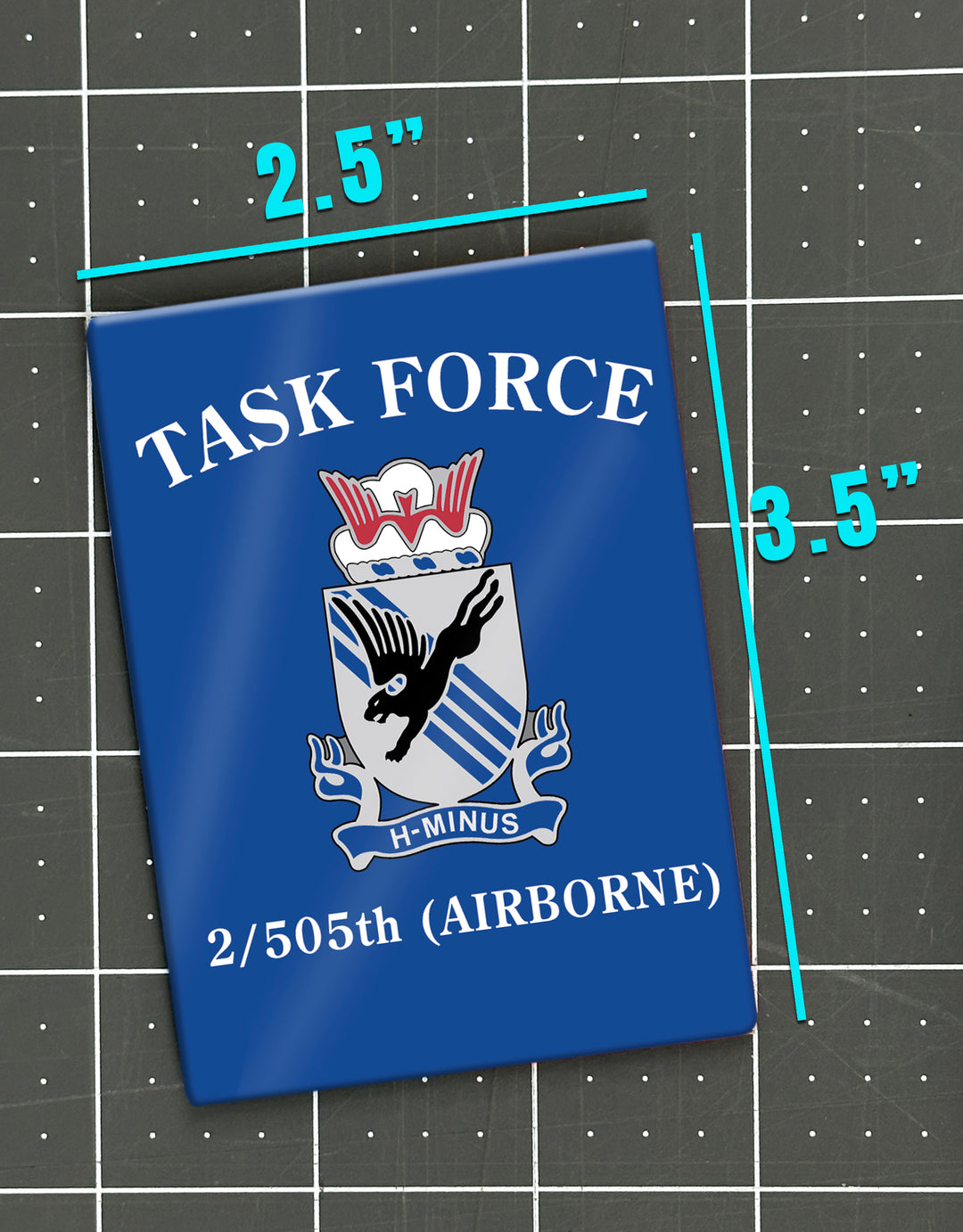The 505th Infantry Regiment (IR), with its historic motto "H-Minus," is one of the foundational and most decorated Parachute Infantry Regiments (PIR) of the U.S. Army's 82nd Airborne Division, the "All-Americans." Activated in 1942 under airborne pioneer Colonel James M. Gavin, the 505th was the first regiment-sized unit to execute a combat jump, landing in Sicily in 1943. The 505th gained eternal fame on D-Day, June 6, 1944, by spearheading the Normandy invasion and liberating Sainte-Mère-Église, the first French town freed by Allied forces, earning a Presidential Unit Citation. The regiment continued its aggressive spirit in Operation Market Garden and the Battle of the Bulge. Today, the lineage is maintained by the 1st Battalion (1-505th PIR) and the 2nd Battalion (2-505th PIR), both ACTIVE Parachute Infantry battalions assigned to the 3rd Brigade Combat Team, 82nd Airborne Division, stationed at Fort Bragg, NC, upholding the tradition of being ready to jump into combat before the main assault.
The 505th Infantry Regiment was constituted on June 24, 1942, and activated as the 505th Parachute Infantry Regiment (PIR) on July 6, 1942, at Fort Benning, GA. In February 1943, the 505th was assigned to the 82nd Airborne Division, commanded by Major General Matthew Ridgway. The regiment’s first commander was the visionary airborne leader, Colonel James M. "Slim Jim" Gavin, who led the unit through grueling training at Fort Bragg, NC, establishing the high standards of readiness and discipline that define the regiment to this day.
World War II: Combat Jumps and the Birth of "H-Minus"
The 505th quickly became one of the most deployed airborne units of the war:
-
Operation Husky (Sicily): On the night of July 9, 1943, the 505th PIR made its first combat jump into Sicily, marking the first regimental-size combat parachute attack in U.S. history. Despite high winds that scattered the paratroopers, small, aggressive groups coalesced and effectively disrupted Axis counterattacks, notably battling the Hermann Göring Panzer Division to save the beachhead at Biazza Ridge.
-
Salerno, Italy: In September 1943, the 505th conducted its second combat jump to reinforce the Allied beachhead at Salerno, again playing a decisive role in halting German counter-offensives and stabilizing the front. The unit later spearheaded the drive that resulted in the Allied capture of Naples in early October, the first major European city to fall to Allied forces.
-
D-Day (Normandy): On June 6, 1944, the 505th achieved everlasting fame as a spearhead of the Normandy invasion. The regiment jumped hours before the main seaborne landings, a concept known as "H-Hour Minus," which the unit proudly adopted as its official motto: "H-MINUS." Elements of the 505th famously liberated the town of Sainte-Mère-Église, securing its place as the first French town freed by Allied paratroopers. The regiment then fought intensely for weeks to secure the crucial Merderet River crossings, earning a Presidential Unit Citation for its tenacity.
-
Operation Market Garden: In September 1944, the 505th made its fourth combat jump into the Netherlands as part of the largest airborne operation in history. They secured the crucial high ground near Groesbeek and later played a vital role in capturing the Nijmegen Bridge in a coordinated effort with the 504th PIR, earning a second Presidential Unit Citation.
-
Battle of the Bulge: The regiment was rushed into the Ardennes in December 1944 to counter the massive German offensive, fighting in harsh winter conditions to contain the enemy breakthrough at locations like the Salm River, further cementing its reputation for unwavering combat effectiveness.
Cold War and Rapid Deployments
The 505th PIR was briefly reorganized after the war but was permanently reassigned to the 82nd Airborne Division and stationed at Fort Bragg, NC. During the Cold War, the regiment maintained its high state of readiness, forming the core of the division’s rapid-response capability, participating in:
-
Dominican Republic (1965): The 505th deployed for Operation Power Pack.
-
Vietnam War (1968-1969): Elements of the 505th deployed to Vietnam, conducting intense combat operations and participating in campaigns including the Tet Counteroffensive.
-
Grenada (1983): The 505th participated in Operation Urgent Fury, executing a combat jump to secure objectives and evacuate U.S. citizens.
-
Panama (1989): The regiment was a major component of the airborne assault during Operation Just Cause.
-
Persian Gulf War (1990-1991): The 505th deployed to Saudi Arabia and participated in Operation Desert Shield/Storm.
Global War on Terror and Current Status (Active)
As the nation’s spearhead, the 505th has been heavily engaged in the conflicts of the 21st century:
-
Afghanistan and Iraq: The regiment deployed multiple times in support of Operation Enduring Freedom and Operation Iraqi Freedom and subsequent operations, engaging in direct combat and stability operations in challenging environments and continuing to demonstrate the mobility and readiness that define airborne forces. The unit's modern paratroopers have executed no-notice deployments around the globe as part of the Immediate Response Force (IRF) mission.
The lineage of the 505th Infantry Regiment remains ACTIVE today, with its two component battalions maintaining their full Parachute Infantry status:
-
1st Battalion, 505th Parachute Infantry Regiment (1-505th PIR)
-
2nd Battalion, 505th Parachute Infantry Regiment (2-505th PIR)
Both "H-Minus" battalions are assigned to the 3rd Brigade Combat Team ("Panther Brigade"), 82nd Airborne Division, stationed at Fort Bragg, NC. They uphold the regiment's historic tradition of being ready to jump into any fight, anywhere in the world, on a moment's notice.
Airborne Apparel Company is proud to offer reproductions and unique designs that celebrate the 505th Infantry Regiment ("H-Minus") legacy.






























